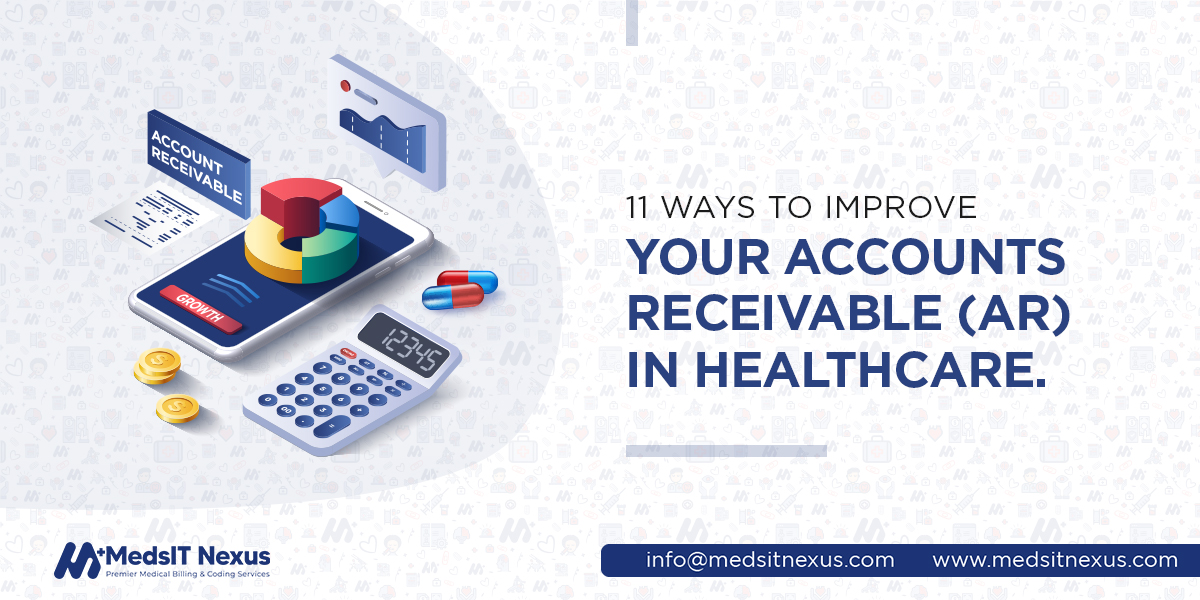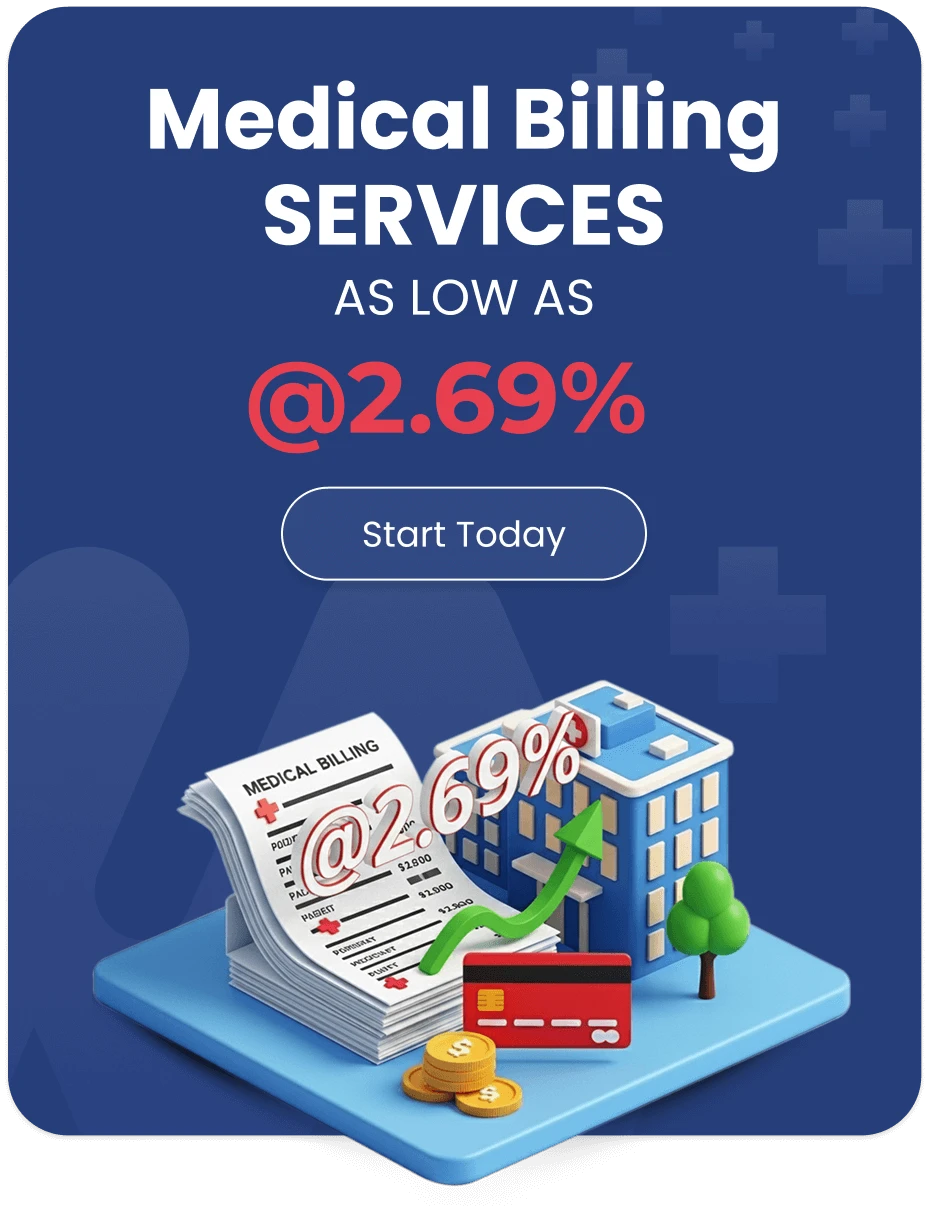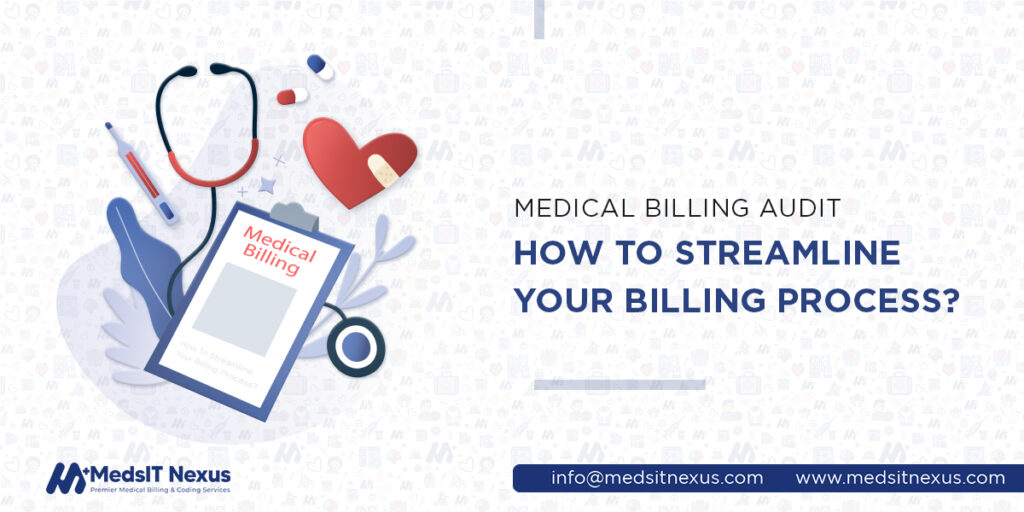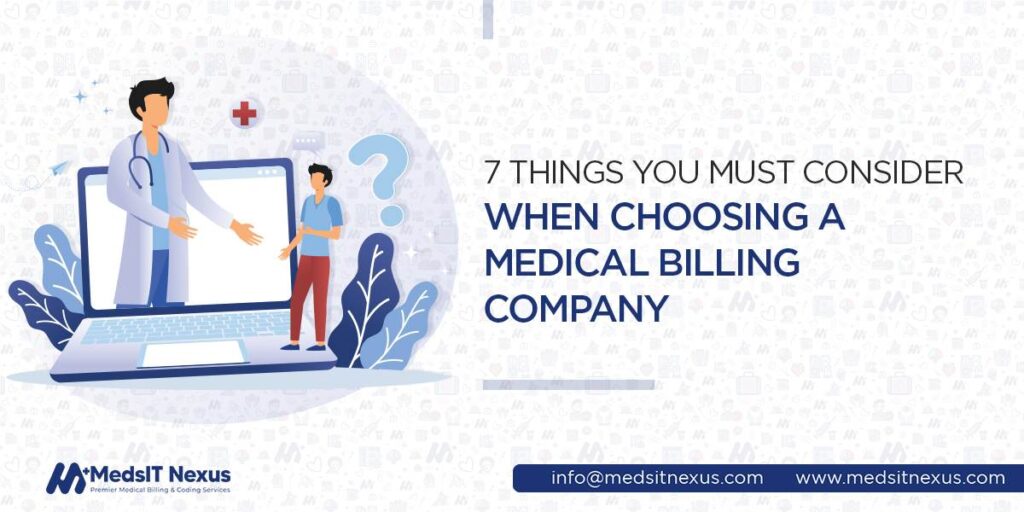11 ways to improve your accounts receivable (AR) in healthcare

In medicine and healthcare, as efforts are a crucial factor, the revenue management cycle is also a critical feature that must maintain. The lag in revenue proves to be a significant reason for the derangement of the cash flow and the enhancement of the accounts receivable days, which directly impacts any healthcare system. So, without any ado, let’s talk comprehensively about Accounts receivable and the various ways to improve your Accounts receivables in healthcare.
What is Account Receivable in medical billing?
In medical billing, “Account receivable” represents the amount that patients or their insurance firms
are legally obliged to pay a medical practitioner in exchange for the services, interventions, and
treatments they have received
A well-known fact about the AR cycle is that it is the last element of the revenue cycle, starting
as soon as the patient is informed about the invoice. While the latter begins with the enrollment,
registration, as well as the foremost appointment schedule of the patient.
There are two
approaches to evaluating account receivables:
- “Days in Account Receivable” is the total amount owed for the average everyday payments for services.
- Since the age of any reimbursement is not taken into account by the 1st method technique, the second way payments are frequently categorized is by their age, that is, the duration of time since the client was invoiced for the treatments.
- 0 to 30 days
- 31–60 days
- 61-90 days
- 91-120 days
The more the AR stays due, the more likely the health provider will not get reimbursement, affecting RCM. Studies have shown that after 120 days, providers are more likely to receive barely ten cents for each dollar.
11 ways to improve your Accounts Receivable (AR) in healthcare
Set payment expectations and collect patient portions promptly
Establishing payment expectations and then communicating clearly with patients about the costs they will
be obligated to pay will facilitate a favorable outcome. Talking about the fact that practitioners face
the probability of losing money if the patient leaves the hospital without having their medical costs
paid.
An investigation says that a provider loses a 20% likelihood of gaining revenue once a patient departs
without submitting money promptly. (1) To prevent unnecessary late payments, get sections of bills
instantly by preparing a draught before administering the treatment.
Track AR reports
Keeping A/R days low obligates providers to monitor patient Accounts Receivable closely and identify the
obstacles to bill collection. Month-wise tracking of AR reports will aid in determining the originating
factors of lousy debt and calculating collection rates. Collecting rates and aged debtors are the two
highlighted parameters that assist providers in analyzing whether they are employing appropriate
strategies or heading in the right way for cash flow.
The former parameter reflects how successfully a provider recovers overdue money in a specified
timeframe. In contrast, the second parameter corresponds to the number of ARs in each age range.
(2)
Comparing both will reveal how much effort is required to get owed money.
Getting it
right for the first time:
The secret to excellent billing, coding, and timely
reimbursement is accuracy. For providers, collecting correct patient data from the beginning,
establishing clinical information, charge entry, and reporting invoices correctly are influential for
the efficiency of the entire AR.
Gary Marlow, vice president of finance at Beverly Hospital and
Addison Gilbert Hospital, asserts: “From a revenue cycle point of view, obtaining the correct
information up front begins with the registration and scheduling of the patient, that forms the
framework through which claims can be billed and obtained most effectively and efficiently.” (3)
Increase the frequency of billing cycles
The more swiftly you bill the payer for all the amenities, the more quickly owed invoices will be
submitted. Contacting your patients frequently and persistently will persuade a sizable fraction of them
to give payment. But unfortunately, many suppliers only deliver charges once per month, leading to
problems in cash flow. At this point, working on raising the regularity of bills to speed up operations
will benefit you.
Charge capture and entry:
Inaccurate charge entry has a
substantial adverse effect on practitioners because you might lose 1% revenue of the annual net. (4)
According to an investigation, approximately 1% of the total cost might not be accurately recorded
because of errors between documents and the services or overlooked expenditures. This 1% loss might seem
tolerable, but a hospital anticipating $350 million yearly cannot afford to waste $3.5 million because
of a faulty charge entry.
Prioritize insurance verification
According to a ClaimRemedi study, eligibility concerns account for around 8% of all claim cancellations
and are the leading reason for claim denials, eventually influencing AR. The ClaimRemedi survey reported
that the rise in eligibility denials was caused by practitioners’ failure to ask patients and insurance
payers crucial questions about eligibility. (5)
Before each appointment,
- Verify each patient’s insurance eligibility to;
-
- Determine the copayment to be paid.
- Confirm that the insurance of the client is in excellent condition and active.
2. Upon verifying their insurance coverage, conduct calls or employ reminders to already notify the patient about the amount of money they will be supposed to pay for treatment
Make paying invoices easy
Offering myriads of payment alternatives accessible, such as receiving money through the portals, cash, credit cards, debit cards, cheques, etc. would be best, making it more straightforward for clients to pay as per their feasibility.
Devise payment plans
For better Accounts Receivable, you must establish an installment program for those who cannot immediately submit money but are eager to pay in proportion. For this, create an agreement paper with clear penalties for the patients if they skip any installment and receive their signature on this contract. The fear of not getting the payment will be reduced by devising such a plan.
Outsource your medical billing
A unique approach to improving your accounts receivables would be outsourcing. Speeding up Denial
Management processes and AR is possible by working with a trustworthy medical billing firm with the
ability and experience to manage the revenue cycle for multiple customers and connections with the
payment processor.
Simplify the structure of your bills:
The medical institution has to make the billing process for patients simpler. The Department of
Health and Human Services reacted to complaints that the healthcare billing structure was excessively
complicated due to medical language and frequent reimbursement demands.
Automate your AR workflow:
Manual scheduling, appointments, patient data, coding, and claim reimbursement; in fact, every
single step requires tedious effort. It consumes both actions and time, drastically leading to delayed
revenue and long AR days. Taking the help of reliable software will come in handy to do every step
swiftly to reduce the days of AR.
Perks of automating your department of AR
- Reduces the likelihood of conflicts because the patient can receive all supporting documents, such as a receipt of the delivery letter.
- May optimize the procedure, allowing the in charge of accounts receivable to increase cash flow, improve customer service, and cut expenses.
- Due to the quick accessibility to all the documents, patient payments are more immediate.
- The requirement for scanning or printing papers is eliminated when employing dependable software to collect records immediately.
- It is quicker to track unpaid bills when automated notifications and functions are controlled.
Choose MedsIT Nexus for Account Receivable Services
Improving and reducing your accounts receivable in healthcare is not as facile as it may seem because it
demands a lot of effort, concentration, and time. Despite employing multiple maintenance strategies, AR
may still negatively affect your revenue cycle, drastically creating a considerable difference between
given services and reimbursement. At this point, you should outsource your medical billing and RCM to an
experienced company.
When it comes to a trustworthy and experience, the MedsIT
Nexus Medical Billing And Coding Services is a partner that cannot be
neglected because of the experts that streamline your whole billing process. In addition to experts, our
experience in reducing accounts receivable is also extensive, leading to profit for you.
Marshall-Russ, Technical Author -
Healthcare IT & Data Systems Analyst at MedsIT Nexus
Edit Technical documentation, workflow automation insights, and data-driven RCM improvement publications following our standard publication protocols.






